

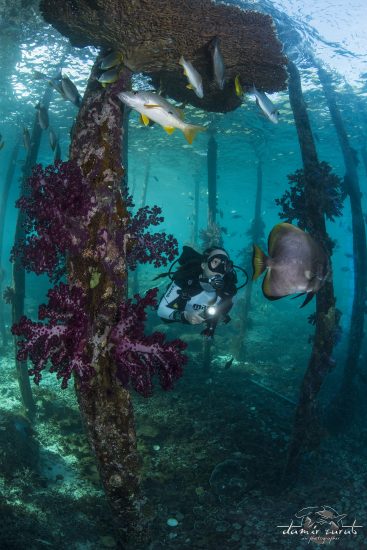
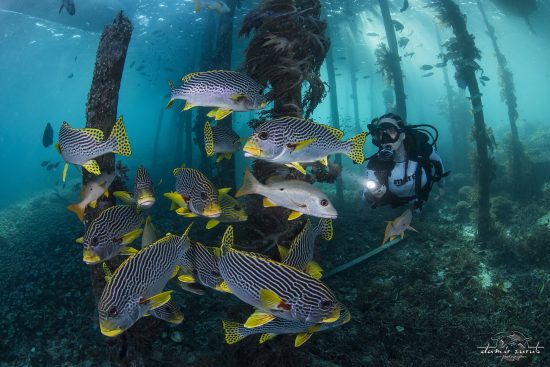
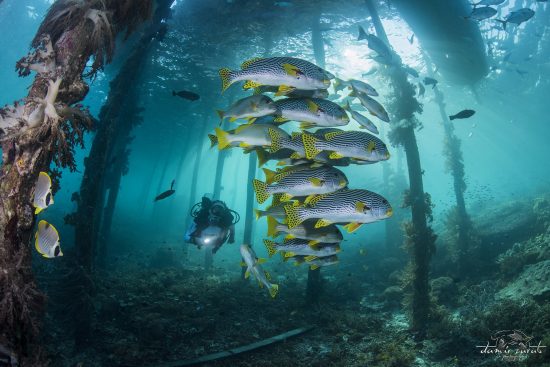
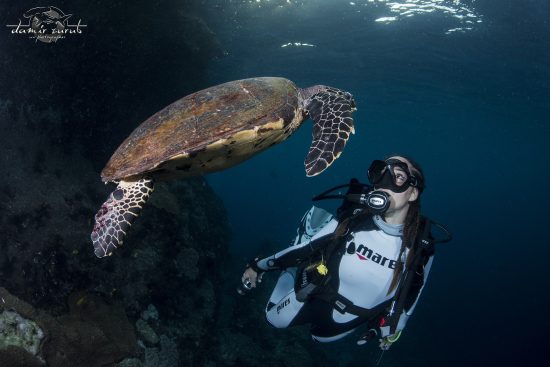
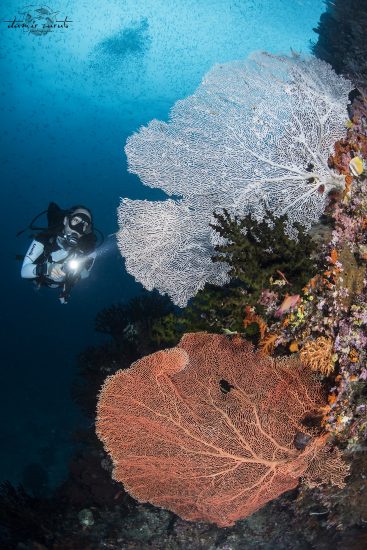
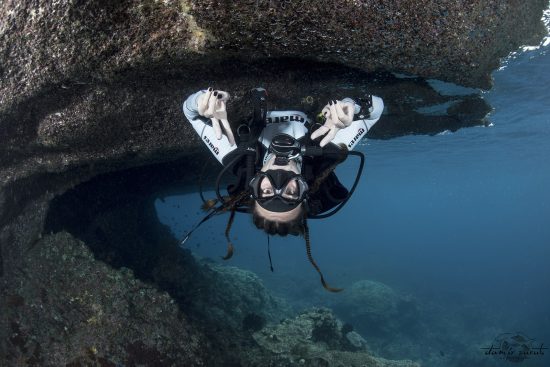
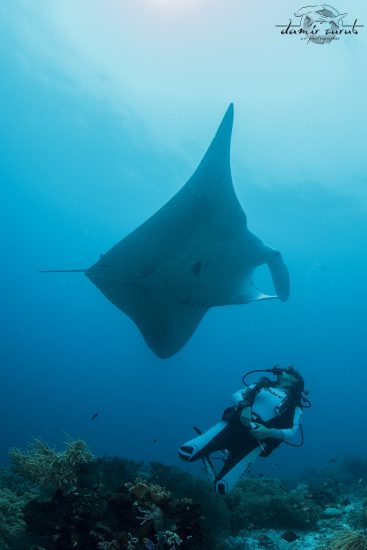
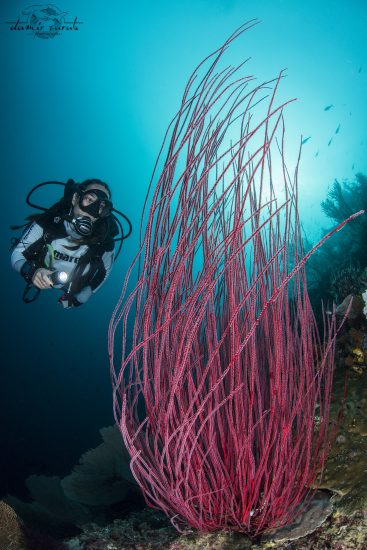
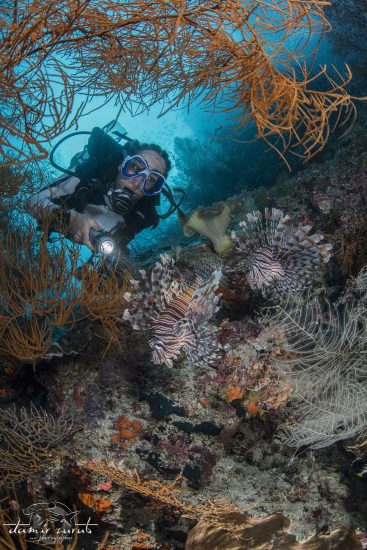
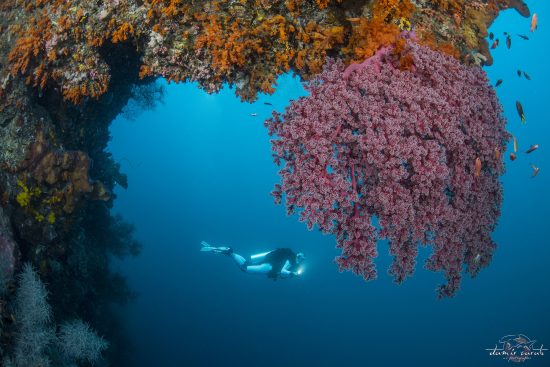
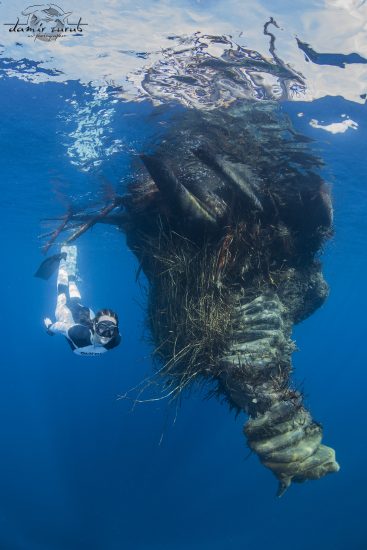
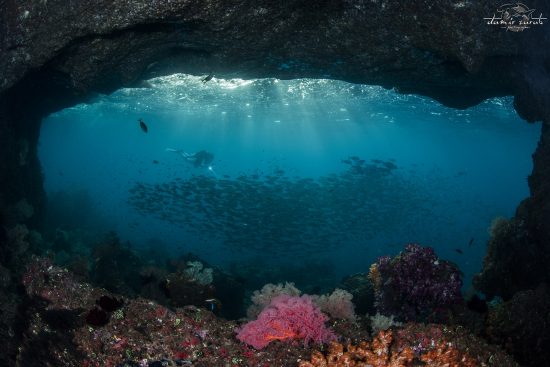
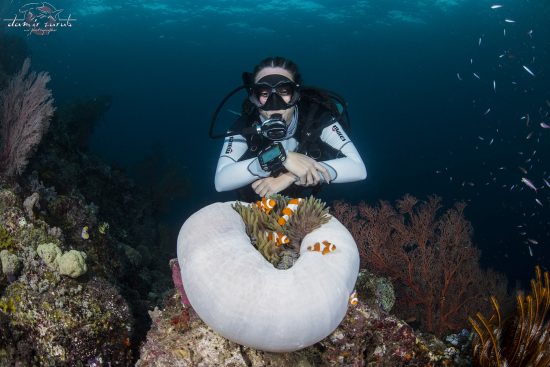
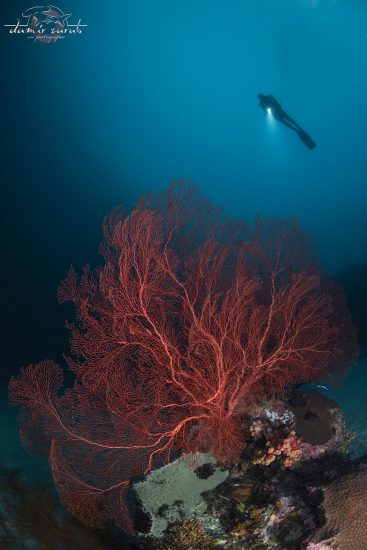
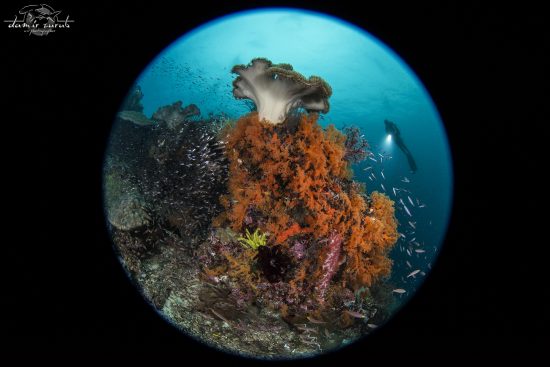
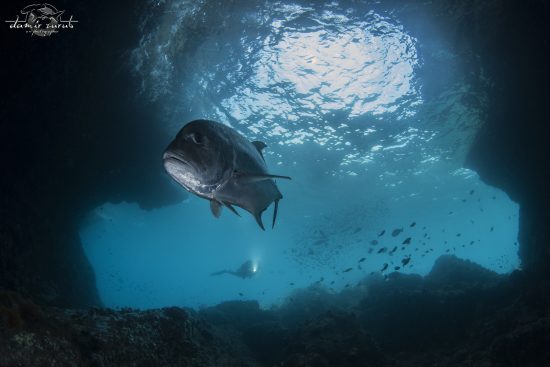
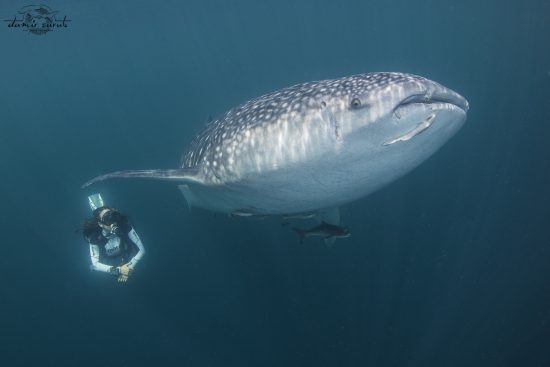
Raja Ampat, best known for its diversity of marine life, can best be described as a coral reef on steroids: 75 percent of all known coral can be found in this spatially rather limited area. The archipelago, similar in size to Croatia, has roughly 60 thousand inhabitants in 100 villages. West Papua is so isolated many of people hadn’t heard of currency before 2002.
Most tourists come from rich western countries and China, and the offer is correspondingly expensive. The liveaboard package allows you to, well, live aboard a luxury sailboat and dive with experienced instructors, while the luxury resort package caters to those less inclined to spend too much time on the water. The third option for staying in Papua is a homestay – in a private family home or even on a privately owned island, with access to a private beach and boat.
Most local diving guides aren’t licensed, but that doesn’t mean you can’t enjoy the untouched nature of the islands or at least snorkel on your own. But diving is exactly what we all go to Raja Ampat for: in our 25 days in this remote corner of the world, fourteen of which were on a boat, we have barely scratched the surface.
Our luxury wooden sailboat ‘Ilike’ was 35 meters long, had seven doubles cabins and carried a two speedboats for trips. Our first destination was the island of Misool, and our first day diving planned to the last minute. Waking up at six in the morning really isn’t a problem when you know what’s out there.
Our first trip underwater was surreal endless schools of tropical fish, giant gorgonia and every soft coral known to mankind in one place, all surrounded by mild, warm waters. We hopped from one island to another with zeal, jumping into the water after brief instructions.
Many locations in Raja Ampat are dominated by strong currents, making things difficult for photographers, but it’s the precisely the currents that make fish abundant. Soft and hard coral stretch in all directions, wherever you look, and are home to fish, crabs and sea slugs. Just standing still for a couple of minutes you’ll see more species than you can count schools of fish swishing around, spreading out like rays if you even breathe in their directions; soft and hard coral, slugs, turtles, sharks and manta rays. If you choose to explore, you might discover an entrance into an underwater cave or a passage connecting two more caves. Recapping your day with friends, you’ll realize you had all seen and experienced different things, that’s how diverse this region is. But don’t worry, you can find and explore everything you’ve missed on the next day.
Our next destination was the Shadow Reef, a meeting place of sorts for manta rays and our most dreamed of location. Two minutes in, we noticed four giant manta rays swimming elegantly through schools of small fish. To say the scene was impressive would be an understatement in any case, it took our breath away.
After 93 minutes underwater, we finally had to leave, and then only to move on according to the schedule. That evening we met an unusual little creature, the walking shark, a small nocturnal shark that looks like it’s walking on the sea floor on its fins. After several days of pure diving, our guides took us on a different sightseeing adventure. The lagoons and caves of the archipelago
Farondi surprised us on the morning of our arrival, when we spotted an Omura’s whale mere meters from the hull of our boat. We spent two hours with the small whale, before embarking on a speleological adventure crawling, climbing, strolling and hopping around caves that house huge swarms of bats, before taking a relaxing swim in a hidden lagoon swarming with harmless jellyfish.
Although we were told they were gentle, non-toxic creatures, we couldn’t bring ourselves to approach them. When we returned to the boat an hour later, the Omura’s whale was still there; he or she ended up being our only companion for three days, as we saw no other mammals along the way. The archipelago is as isolated as it gets, communicating with the world exclusively via satellites.
Two weeks were merely enough to see the most interesting locations in the Raja Ampat Regency, but we are more than ready to visit again, especially with the same crew and on the same boat. Here’s to hoping serious tourism doesn’t really sink its teeth into Raja Ampat and Papua or it will end up being just another magic corner of the world whose wild beauty was ruined by the arrival of modern civilization.
 Damir
Damir 29th January 2018
29th January 2018 Indonezija
Indonezija